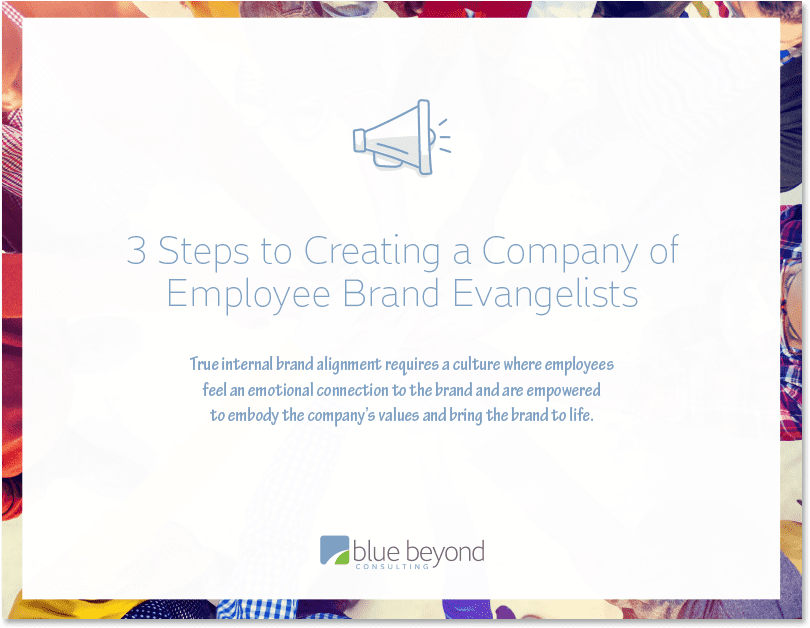Brand And Culture Alignment: Your Competitive Edge
Do your brand and culture work together? Are they creating value or causing confusion? Brand and culture alignment create a substantial competitive advantage in everything from recruiting and retention to productivity and profits. How companies work together on the inside positively impacts how they show up on the outside. The bottom line: brand and culture need to mirror one another.
Equipping employees to live and share the company story – and stay “on brand” – is important for businesses of all sizes. You need your people to clearly understand and support not only what the company does (strategy, brand, mission, vision), but how the employee contributes to it through shared values, behaviors and competencies. When all employees demonstrate brand-building behaviors they enhance the customer experience.
It’s up to you to instill your employees with so much love for the brand that they naturally want to spout its virtues to customers, friends and family members. Your job is to turn them into brand evangelists.
4 Tips For Brand and Culture Alignment
Here are four ways to support inside/outside alignment:
1. Look at your company values.
How well do your executives and employees embody them? If your company has gone through a major change, such as new leadership, merger/acquisition or market shift, it may be time for a refresh. Prioritize reviewing and updating corporate values as part of your brand and culture strategy.
2. Standardize hiring and performance review practices.
When your company’s brand and culture is incorporated into hiring practices, you’re bringing in talent that naturally identifies with the core values and strategic direction of the company. Your people represent your brand! Reinforce this by adding aspects of brand and culture into the demonstrated behaviors and competencies you expect from your employees in performance review processes. Download our eBook for tips and tactics on creating a company of brand evangelists.
Download our eBook for tips and tactics on creating a company of brand evangelists.
3. Don’t be afraid of social media.
How friendly is your social media policy? Is it focused on telling employees what NOT to do, or does it provide helpful tips that let them know you trust them? Give employees regular access to readily shareable, tweet-able content. Make it fun and easy for them to spread good news about your company. When employees feel valued, respected and trusted, they are less likely to misuse social channels.
4. Marketing, HR…? Take ownership.
Who owns brand/culture alignment? You. Whether you’re part of the marketing, internal communications, HR or brand team, it doesn’t matter. Make an effort to partner with other members of the organization who own and influence potential touch points for brand and culture alignment. Get together and brainstorm. Think of ways to create a corporate culture that is on-brand and on-strategy.
Companies whose employees are deeply grounded in its values and who actively engage and participate in conversations from the inside-out will have a distinct advantage over their competitors.